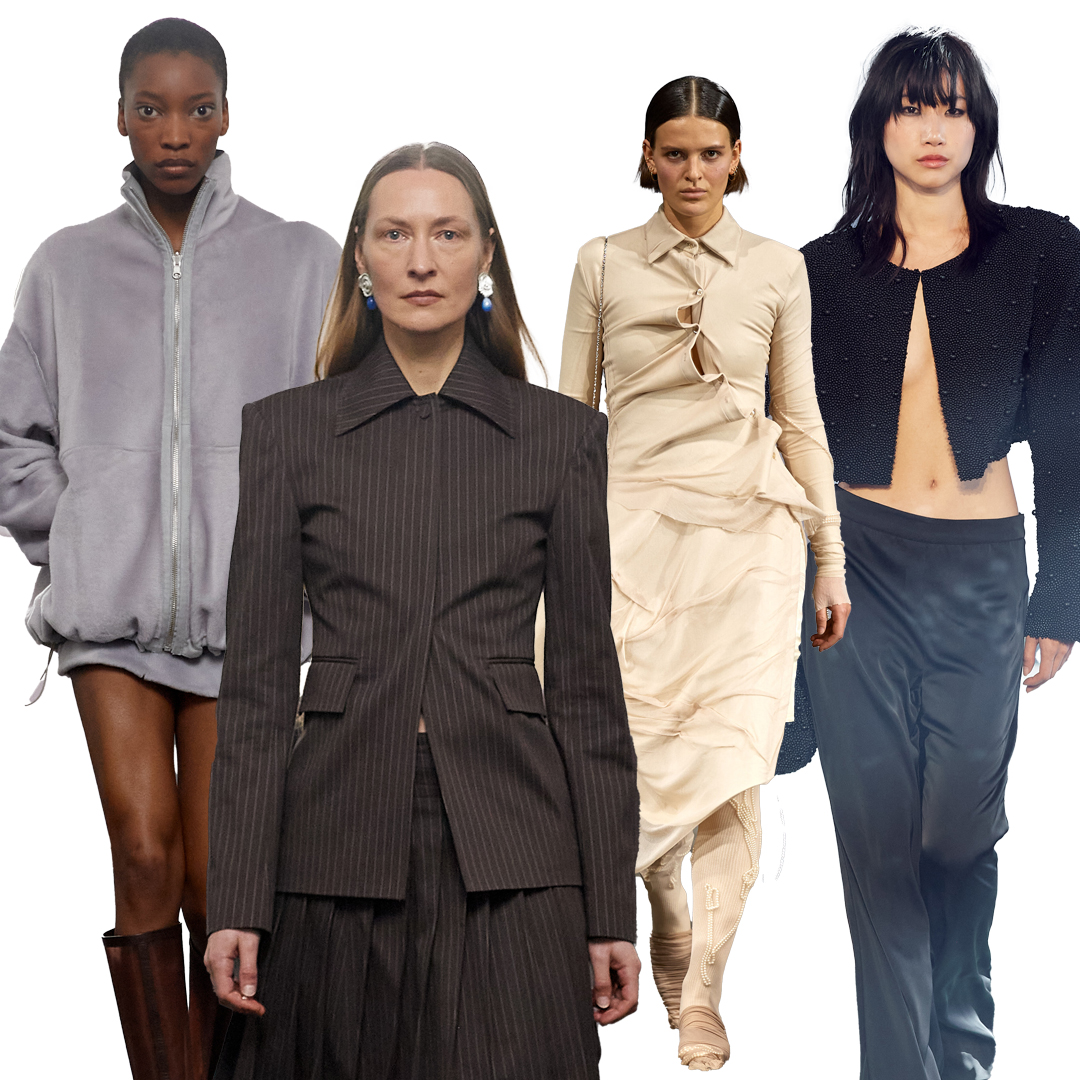When Copenhagen Fashion Week announced its brand line-up and schedule, Ganni’s absence was conspicuous. Copenhagen’s favorite fashion house, notoriously known for its after-party and legendary dinner, opted for a presentation in Paris instead. It set the stage for a toned-down CPHFW, with the economic downturn and the world’s turmoil holding sway. Discover the full Copenhagen Fashion Week recap below.
COPENHAGEN FASHION WEEK RECAP
“The everyday reigned supreme,” Vogue quoted in their Copenhagen Fashion Week recap. While the fashion week’s street style was filled with hints of red, exorbitant accessories, mob wives, and look-at-me coats, the clothes displayed on the runways were more toned down. Economic downturn brings about simplicity – so far, nothing new. What was striking, though, wasn’t only the clothes. Ganni’s absence from this season’s schedule predicted a more subdued week, and smaller show venues and less influencer-heavy front rows confirmed the predictions. Like others, Ganni hosted an intimate dinner, with influencers and international press seizing the opportunity to engage with the brand.
The absence of more prominent names or smaller venues created space for emerging brands to attract the fashion week crowd. At the Copenhagen Fashion Week New Talent Hub, visitors could discover the stories behind collections from labels such as Stamm and Nicklas Skovgaard – the latter hosted a theatrical show on Monday, surprising guests with whimsy models dressed in cartoonish clothes. Very well made, that is. The young designer paved the way for other upcoming brands to experiment. His aesthetic and theatrical way of presenting didn’t set the tone for the shows to come, though.
Another striking event on CPHFW’s schedule? The much-anticipated debut of Forza Collective. Creative director Kristoffer Guldager Kongshaug gained experience at Raf Simons, Christian Dior Couture, Balmain, Lanvin, and Theory. The craft he learned in Paris and the commercial knowledge he gained from working in New York, combined with his sense of aesthetics and style, is precisely what this collection is about. Undoubtedly, his colored sheer socks, re-introducing the classic tie, and reframing modern office attire will reign next season’s front rows.
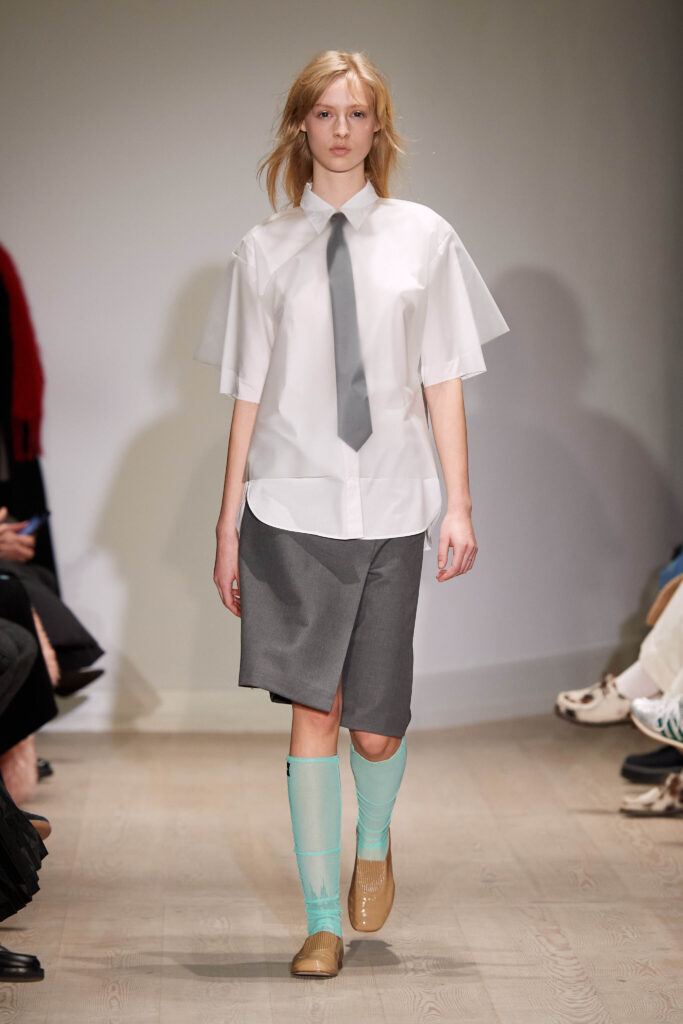
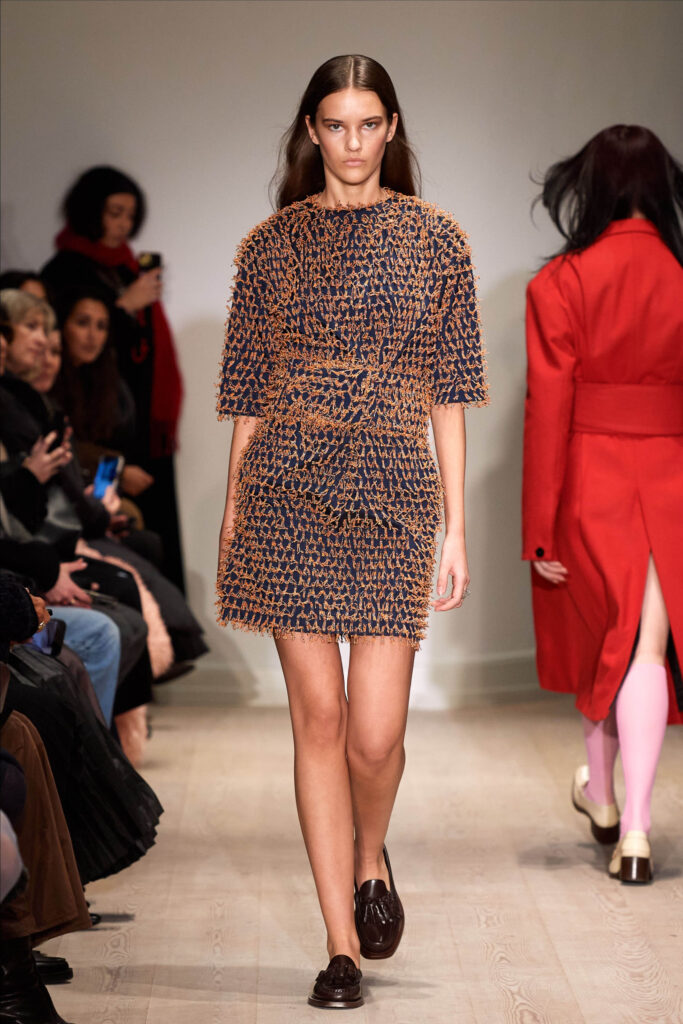
BACK TO WORK
Copenhagen Fashion Week’s dominant aesthetic significantly overlaps with the “Office Siren” look that keeps TikTok in its grasp. In short, Office Siren is a sexy Y2K take on officewear. Put rom-com movies from the nineties and early naughts in the mix with last season’s aesthetics dictated by Miu Miu and Bella Hadid’s daily looks. It’s giving seductive nerd meets office crush. During the 2010s, officewear became more casual, and the pandemic took it further. With the average office attire slowly merging with leisure wear, it’s refreshing to discover new collections that tap into the spirit of our age. Besides modern Miu Miu and nineties Prada, Gisele Bundchen in The Devil Wears Prada ranks high on many mood boards for the season ahead. Structured, tailored, and sleek, yet feminine: the Office Siren aesthetic is copied by many – from Gen Z to Millennials. It’s not purely about dressing for the office; instead, it taps into self-expression through clothes – no matter the occasion. Copenhagen Fashion Week’s runways formed a blank canvas for embracing this re-invented style. It’s toned down, classic, and timeless, with a certain edge. Call it quiet luxury or understated chic; the common thread was about toned-down dressing centered around quality. Craftsmanship was pivotal to every collection, CPHFW’s CEO Cecilie Thorsmark explained.
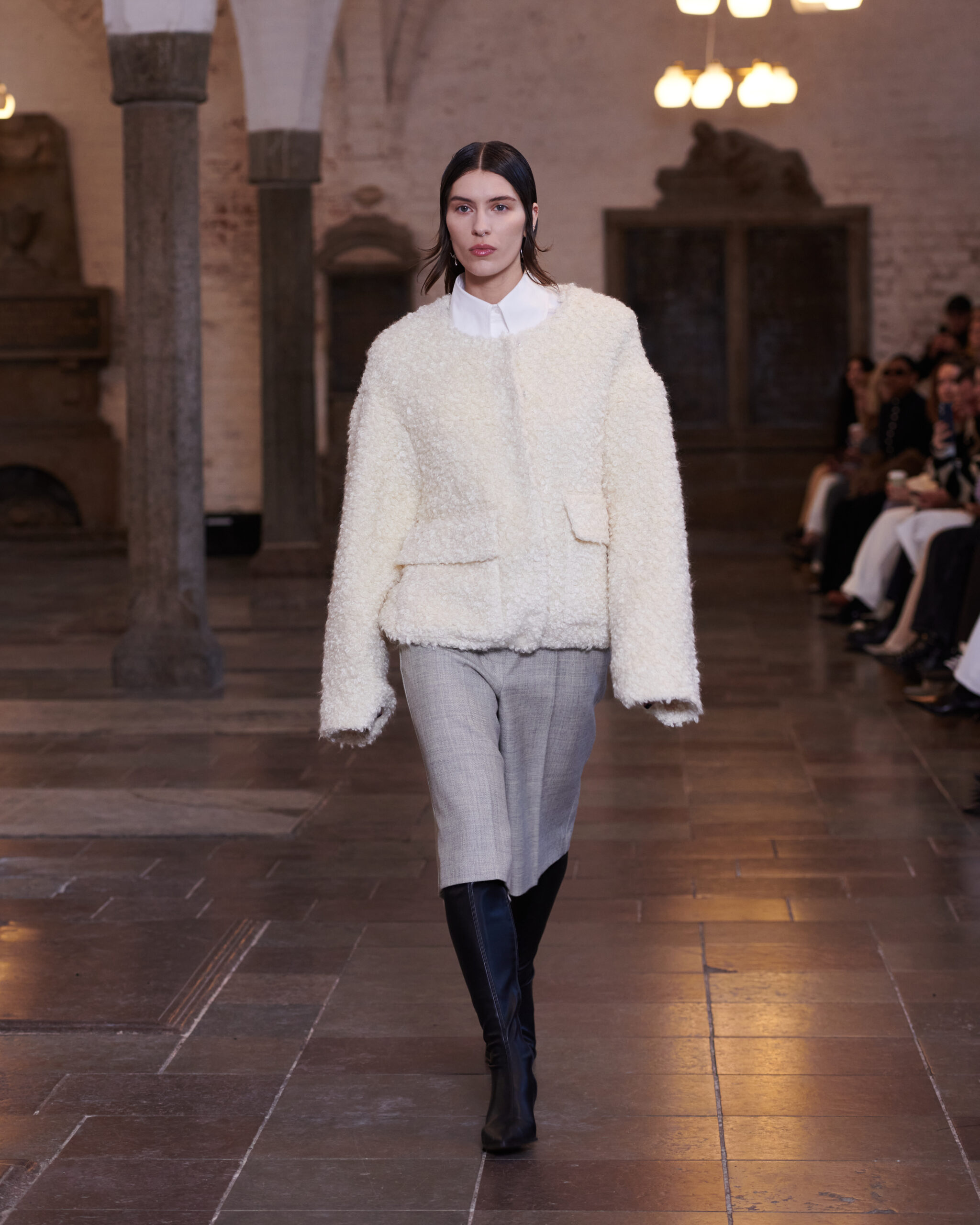
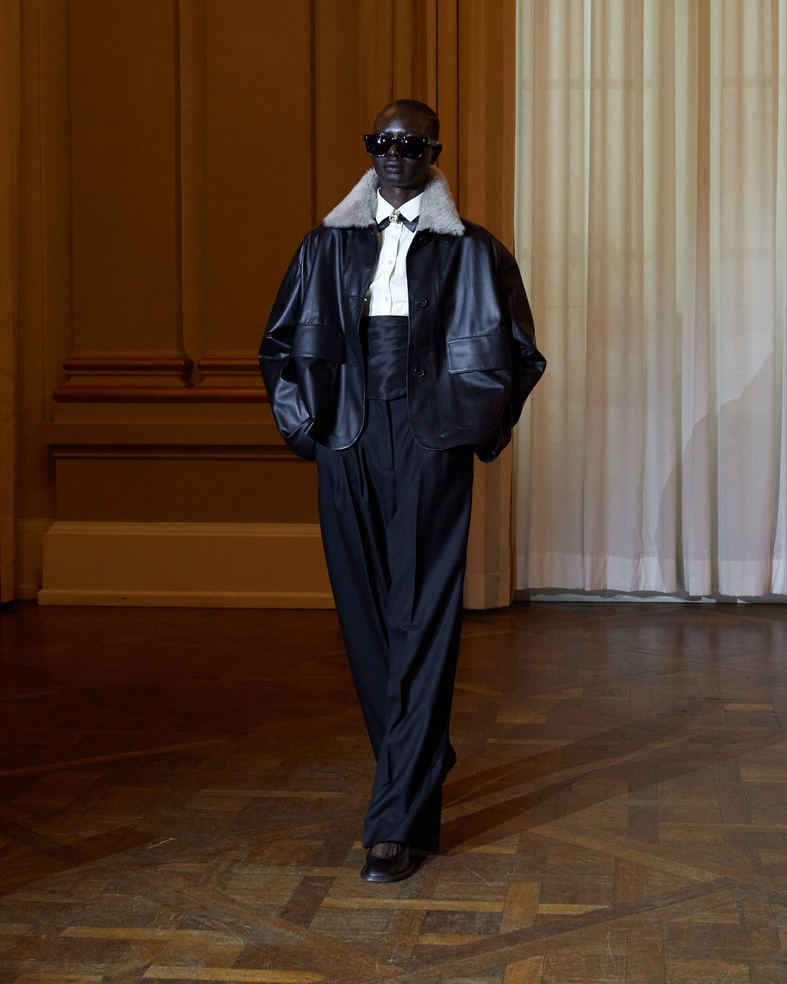
Let’s be clear: Copenhagen Fashion Week’s dominant aesthetic was anything but dull. While the clothes were predominantly wearable – and, a little commercial here and there – that might be what people need in times like these. The economic downturn from 2007 is etched in our memories, and so is the corresponding minimalist era it heralded. With the rise of TikTok, trend cycles have shortened, and clothes many wore ten to fifteen years ago reclaim their status. And if that indicates people can re-wear the clothes they kept from those eras, that’s great. After all, Copenhagen Fashion Week is all about sustainability.
Fashion week schedule 2024: the ultimate guide to the runway

